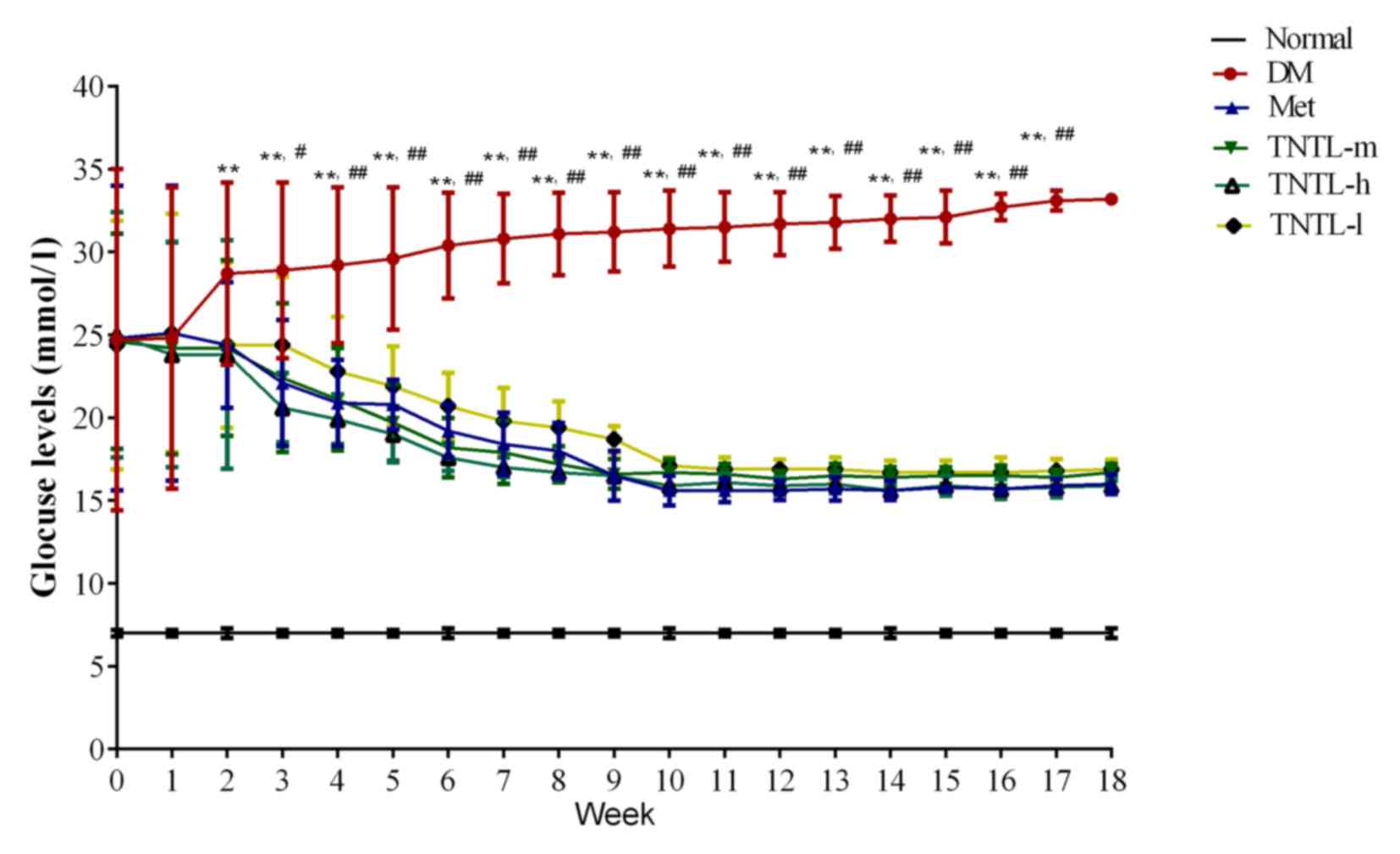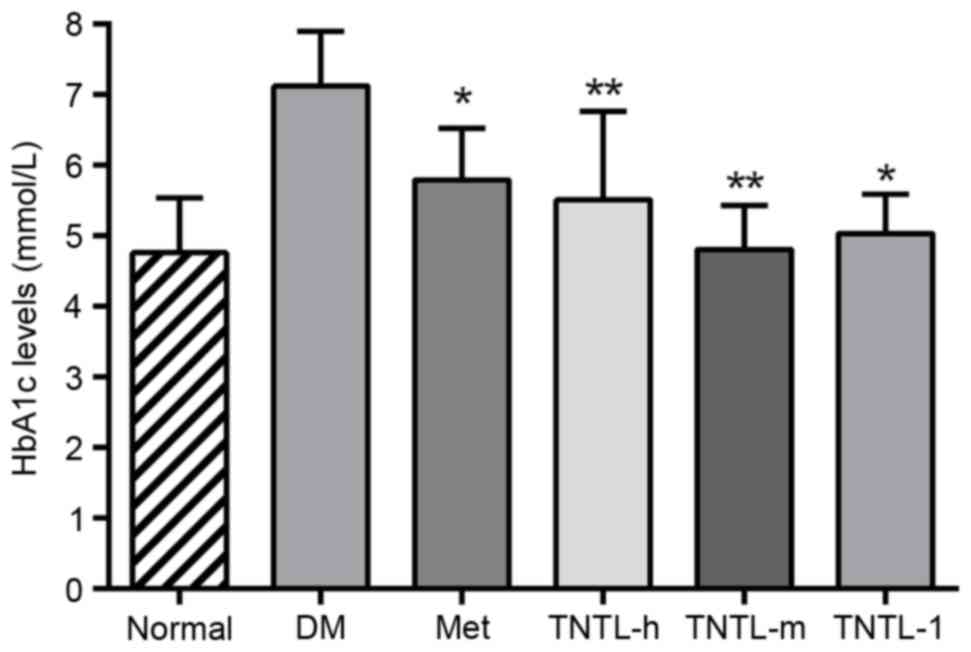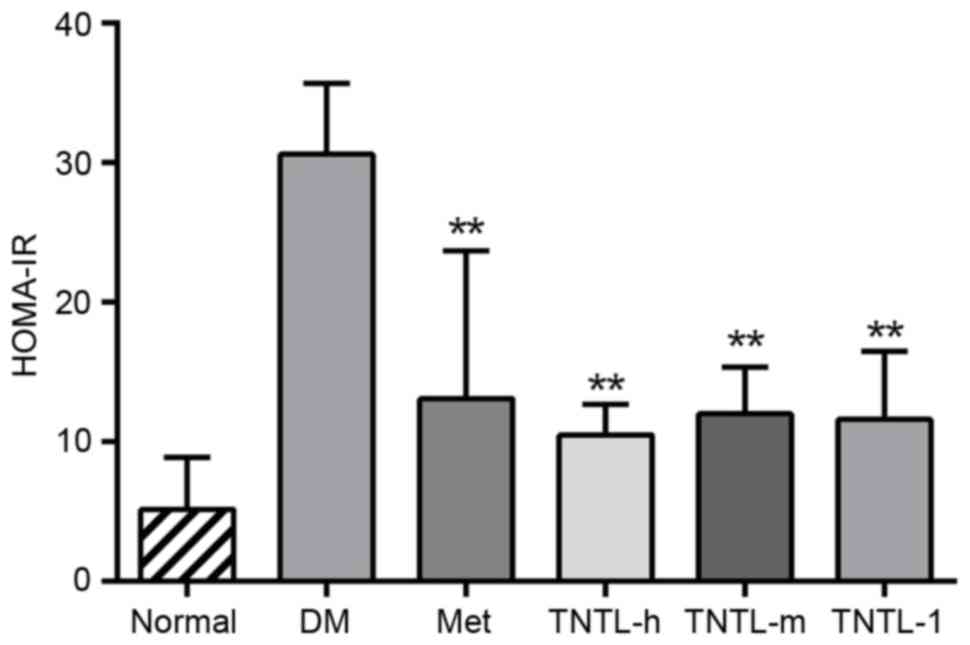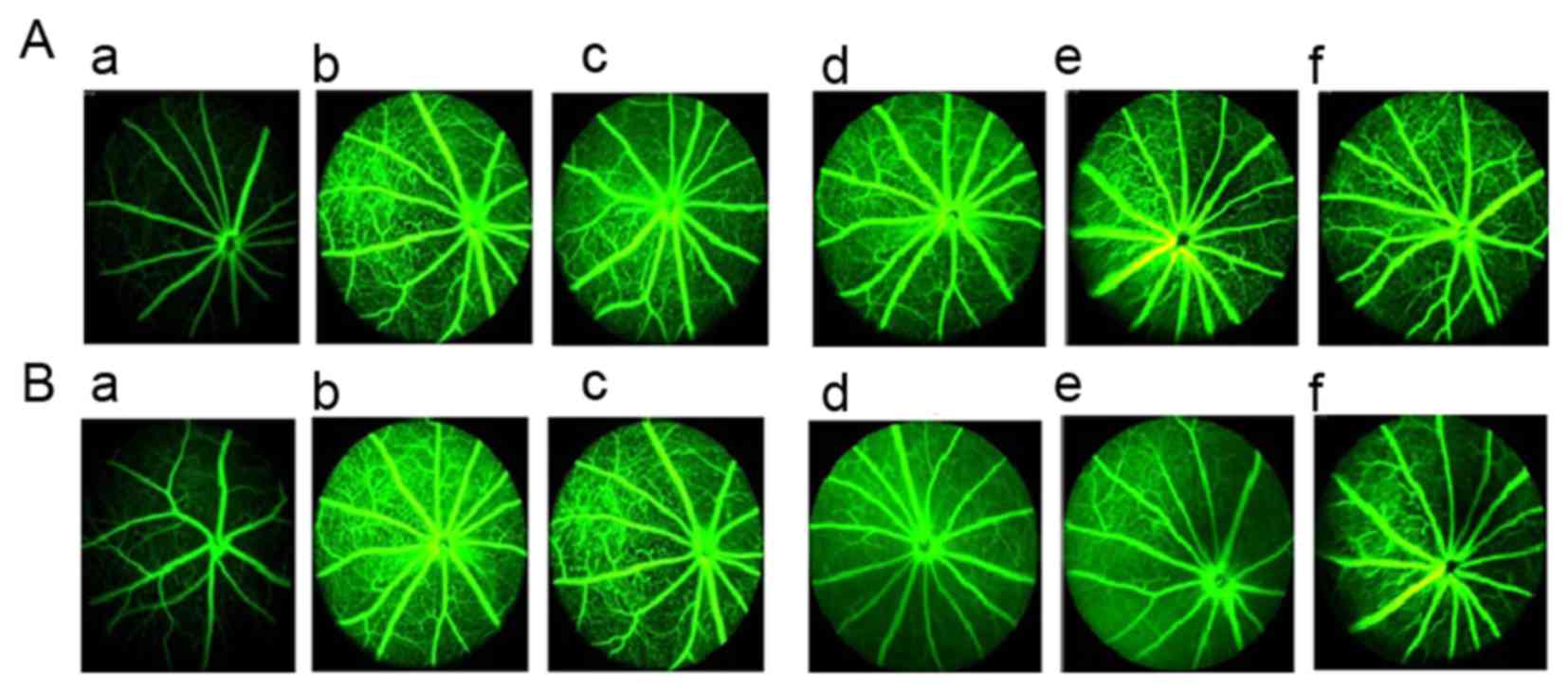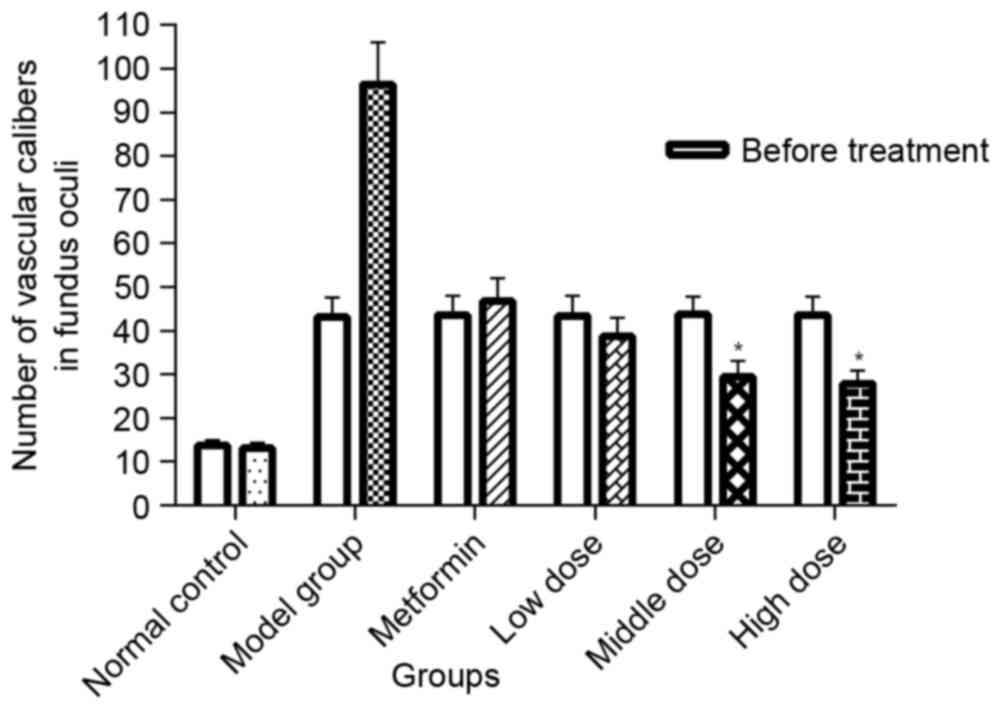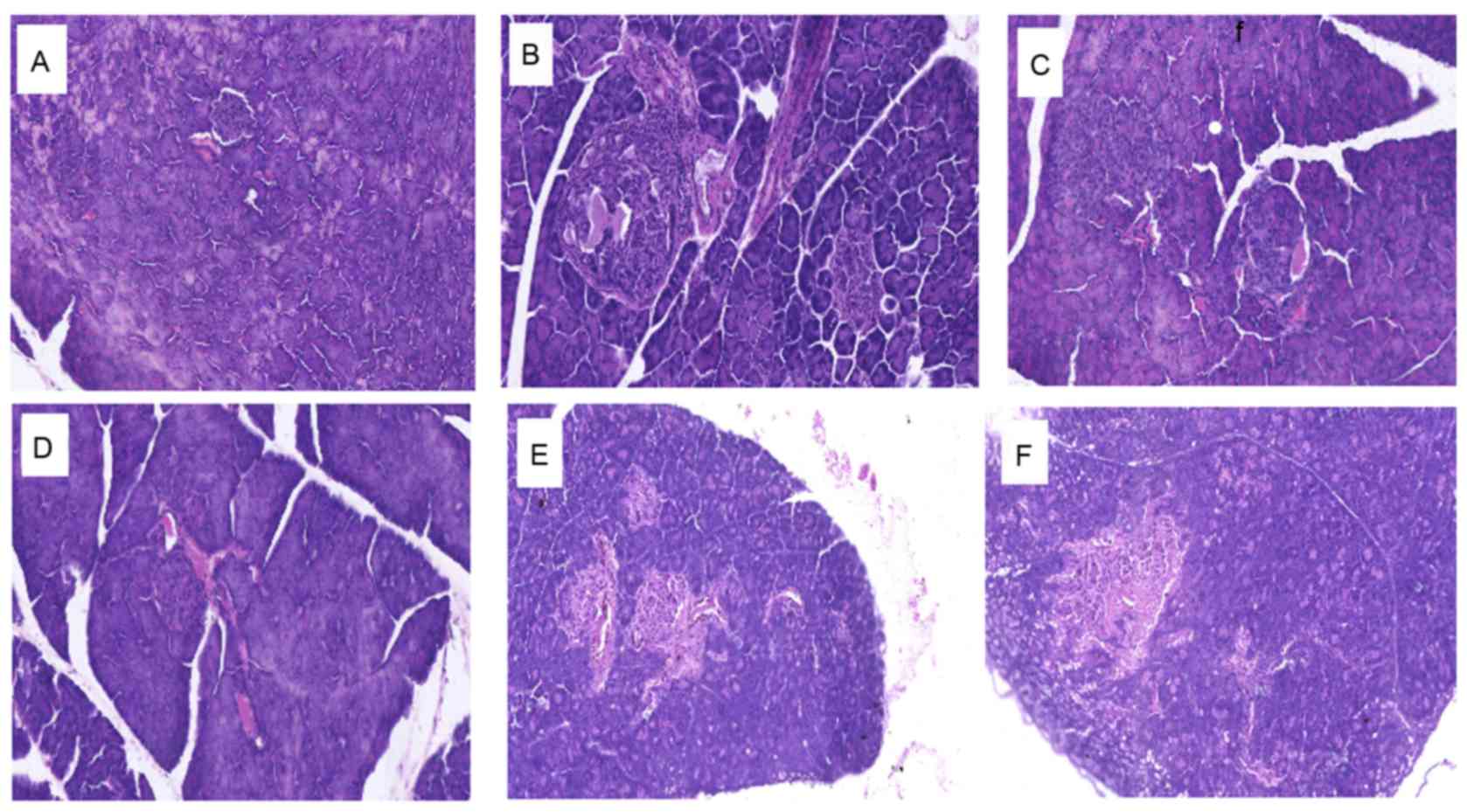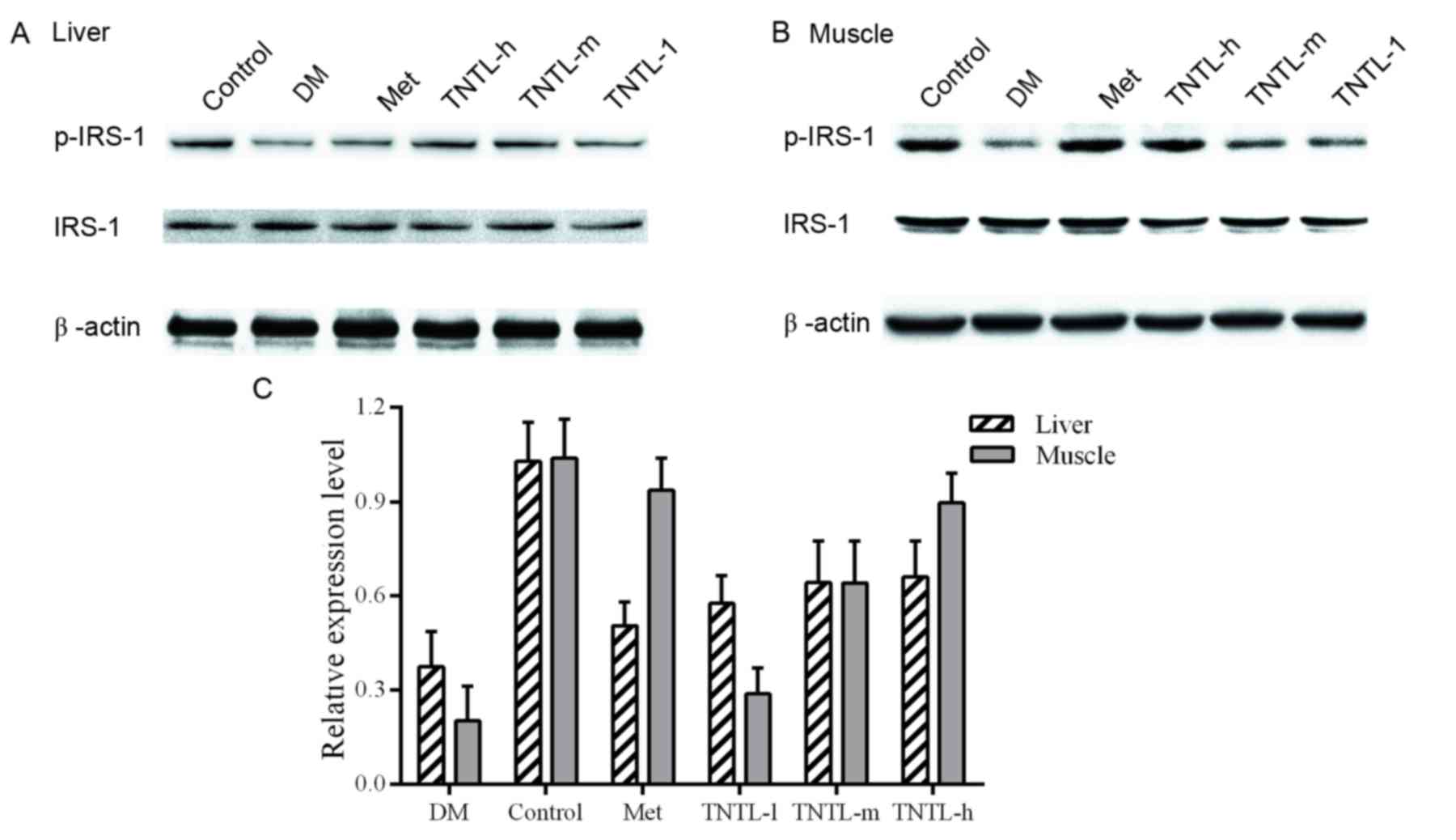|
1
|
Chan JC, Malik V, Jia W, Kadowaki T,
Yajnik CS, Yoon KH and Hu FB: Diabetes in Asia: Epidemiology, risk
factors, and pathophysiology. Jama. 301:2129–2140. 2009. View Article : Google Scholar : PubMed/NCBI
|
|
2
|
Chan JC, Zhang Y and Ning G: Diabetes in
China: A societal solution for a personal challenge. Lancet
Diabetes Endocrinol. 2:969–979. 2014. View Article : Google Scholar : PubMed/NCBI
|
|
3
|
Ning G and Bloomgarden Z: Diabetes in
China: Prevalence, diagnosis, and control. J Diabetes. 5:3722013.
View Article : Google Scholar : PubMed/NCBI
|
|
4
|
Weng J and Bi Y: Diabetes in China: The
challenge now. J Diabetes Investig. 1:170–171. 2010. View Article : Google Scholar : PubMed/NCBI
|
|
5
|
L'Heveder R and Nolan T: International
Diabetes Federation. Diabetes Res Clin Pract. 101:349–351. 2013.
View Article : Google Scholar : PubMed/NCBI
|
|
6
|
Yang W, Lu J, Weng J, Jia W, Ji L, Xiao J,
Shan Z, Liu J, Tian H, Ji Q, et al: Prevalence of diabetes among
men and women in China. N Engl J Med. 362:1090–1101. 2010.
View Article : Google Scholar : PubMed/NCBI
|
|
7
|
Yu S, Sun Z, Zheng L, Guo X, Yang H and
Sun Y: Prevalence of Diabetes and Impaired Fasting Glucose in
Hypertensive Adults in Rural China: Far from Leveling-Off. Int J
Environ Res Public Health. 12:14764–14779. 2015. View Article : Google Scholar : PubMed/NCBI
|
|
8
|
Hu D, Sun L, Fu P, Xie J, Lu J, Zhou J, Yu
D, Whelton PK, He J and Gu D: Prevalence and risk factors for type
2 diabetes mellitus in the Chinese adult population: The InterASIA
Study. Diabetes Res Clin Pract. 84:288–295. 2009. View Article : Google Scholar : PubMed/NCBI
|
|
9
|
Hu D, Fu P, Xie J, Chen CS, Yu D, Whelton
PK, He J and Gu D: MS for the InterASIA Collaborative Group:
Increasing prevalence and low awareness, treatment and control of
diabetes mellitus among Chinese adults: The InterASIA study.
Diabetes Res Clin Pract. 81:250–257. 2008. View Article : Google Scholar : PubMed/NCBI
|
|
10
|
Jia W: Diabetes: A challenge for China in
the 21st century. Lancet Diabetes Endocrinol. 2:e6–e7. 2014.
View Article : Google Scholar : PubMed/NCBI
|
|
11
|
Chi C, Lee JL, Lai JS, Chen SC, Chen CY
and Chang SK: Utilization of Chinese medicine in Taiwan. Altern
Ther Health Med. 3:40–53. 1997.PubMed/NCBI
|
|
12
|
Hesketh T and Zhu WX: Health in China.
Traditional Chinese medicine: One country, two systems. BMJ.
315:115–117. 1997. View Article : Google Scholar : PubMed/NCBI
|
|
13
|
Pang B, Zhou Q, Zhao TY, He LS, Guo J,
Chen HD, Zhao LH and Tong XL: Innovative thoughts on treating
diabetes from the perspective of traditional Chinese medicine. Evid
Based Complement Alternat Med. 2015:9054322015. View Article : Google Scholar : PubMed/NCBI
|
|
14
|
Tang C, Ye Y, Feng Y and Quinn RJ: TCM,
brain function and drug space. Nat Prod Rep. 33:6–25. 2016.
View Article : Google Scholar : PubMed/NCBI
|
|
15
|
Tong XL, Dong L, Chen L and Zhen Z:
Treatment of diabetes using traditional Chinese medicine: Past,
present and future. Am J Chin Med. 40:877–886. 2012. View Article : Google Scholar : PubMed/NCBI
|
|
16
|
Wang P, Xu Q, Sun Q, Fan FF, Guo XR and
Guo F: Assessment of the reporting quality of randomized controlled
trials on the treatment of diabetes mellitus with traditional
chinese medicine: A systematic review. PLoS One. 8:e705862013.
View Article : Google Scholar : PubMed/NCBI
|
|
17
|
Zhang TT and Jiang JG: Active ingredients
of traditional Chinese medicine in the treatment of diabetes and
diabetic complications. Expert Opin Investig Drugs. 21:1625–1642.
2012. View Article : Google Scholar : PubMed/NCBI
|
|
18
|
Jiang HL, Niu JJ, Zhang WF, Huang WJ, Zhou
MY, Sha WJ, Li JY, Li FF, Zhu T, Xia X, et al: The role of central
nervous system on hypoglycemia and the feasibility of the brain
theory in traditional Chinese medicine on treatment of diabetes
mellitus. J Integr Med. 12:1–6. 2014. View Article : Google Scholar : PubMed/NCBI
|
|
19
|
Lao L and Ning Z: Integrating traditional
Chinese medicine into mainstream healthcare system in Hong Kong,
China-A model of integrative medicine in the HKU-SZ Hospital. J
Integr Med. 13:353–355. 2015. View Article : Google Scholar : PubMed/NCBI
|
|
20
|
Li Y, Wu T, Shang H and Yang K: all
subcentres attending the Chinese EBM Working Meeting in December
2008: Strategies for promoting the development of evidence-based
medicine in China. J Evid Based Med. 2:47–52. 2009. View Article : Google Scholar : PubMed/NCBI
|
|
21
|
Liao PY, Hsu PC, Chen JM, Chiang JY and Lo
LC: Diabetes with pyogenic liver abscess-A perspective on tongue
assessment in traditional Chinese medicine. Complement Ther Med.
22:341–348. 2014. View Article : Google Scholar : PubMed/NCBI
|
|
22
|
Lin YJ, Ho TJ, Yeh YC, Cheng CF, Shiao YT,
Wang CB, Chien WK, Chen JH, Liu X, Tsang H, et al: Chinese herbal
medicine treatment improves the overall survival rate of
individuals with hypertension among type 2 diabetes patients and
modulates in vitro smooth muscle cell contractility. PLoS One.
10:e01451092015. View Article : Google Scholar : PubMed/NCBI
|
|
23
|
Wu Q and Fan H: The research for the
clinical curative effect through combing traditional Chinese
medicine with insulin to cure diabetes. Pak J Pharm Sci. 27:(4
Suppl). S1057–S1061. 2014.
|
|
24
|
Cheng L, Meng XB, Lu S, Wang TT, Liu Y,
Sun GB and Sun XB: Evaluation of hypoglycemic efficacy of
tangningtongluo formula, a traditional Chinese Miao medicine, in
two rodent animal models. J Diabetes Res. 2014:7454192014.
View Article : Google Scholar : PubMed/NCBI
|
|
25
|
Chen H, Charlat O, Tartaglia LA, Woolf EA,
Weng X, Ellis SJ, Lakey ND, Culpepper J, Moore KJ, Breitbart RE, et
al: Evidence that the diabetes gene encodes the leptin receptor:
Identification of a mutation in the leptin receptor gene in db/db
mice. Cell. 84:491–495. 1996. View Article : Google Scholar : PubMed/NCBI
|
|
26
|
Kodama H, Fujita M and Yamaguchi I:
Development of hyperglycaemia and insulin resistance in conscious
genetically diabetic (C57BL/KsJ-db/db) mice. Diabetologia.
37:739–744. 1994. View Article : Google Scholar : PubMed/NCBI
|
|
27
|
Wallace TM, Levy JC and Matthews DR: Use
and abuse of HOMA modeling. Diabetes Care. 27:1487–1495. 2004.
View Article : Google Scholar : PubMed/NCBI
|
|
28
|
Poon TY, Ong KL and Cheung BM: Review of
the effects of the traditional Chinese medicine Rehmannia Six
Formula on diabetes mellitus and its complications. J Diabetes.
3:184–200. 2011. View Article : Google Scholar : PubMed/NCBI
|
|
29
|
Ji L, Tong X, Wang H, Tian H, Zhou H,
Zhang L, Li Q, Wang Y, Li H, Liu M, et al: Efficacy and safety of
traditional chinese medicine for diabetes: A double-blind,
randomised, controlled trial. PLoS One. 8:e567032013. View Article : Google Scholar : PubMed/NCBI
|
|
30
|
Wei J, Wu R and Zhao D: Analysis on
traditional Chinese medicine syndrome elements and relevant factors
for senile diabetes. J Tradit Chin Med. 33:473–478. 2013.
View Article : Google Scholar : PubMed/NCBI
|
|
31
|
Angiolillo DJ, Bernardo E, Zanoni M, Vivas
D, Capranzano P, Malerba G, Capodanno D, Prandini P, Pasquali A,
Trabetti E, et al: Impact of insulin receptor substrate-1 genotypes
on platelet reactivity and cardiovascular outcomes in patients with
type 2 diabetes mellitus and coronary artery disease. J Am Coll
Cardiol. 58:30–39. 2011. View Article : Google Scholar : PubMed/NCBI
|
|
32
|
Suer Orkunoglu FE, Mergen H, Bolu E and
Ozata M: Molecular scanning for mutations in the insulin receptor
substrate-1 (IRS-1) gene in Turkish with type 2 diabetes mellitus.
Endocr J. 52:593–598. 2005. View Article : Google Scholar : PubMed/NCBI
|
|
33
|
Zhang Y, Sun CM, Hu XQ and Zhao Y:
Relationship between melatonin receptor 1B and insulin receptor
substrate 1 polymorphisms with gestational diabetes mellitus: A
systematic review and meta-analysis. Sci Rep. 4:61132014.
View Article : Google Scholar : PubMed/NCBI
|
|
34
|
Karolina DS, Armugam A, Tavintharan S,
Wong MT, Lim SC, Sum CF and Jeyaseelan K: MicroRNA 144 impairs
insulin signaling by inhibiting the expression of insulin receptor
substrate 1 in type 2 diabetes mellitus. PLoS One. 6:e228392011.
View Article : Google Scholar : PubMed/NCBI
|



